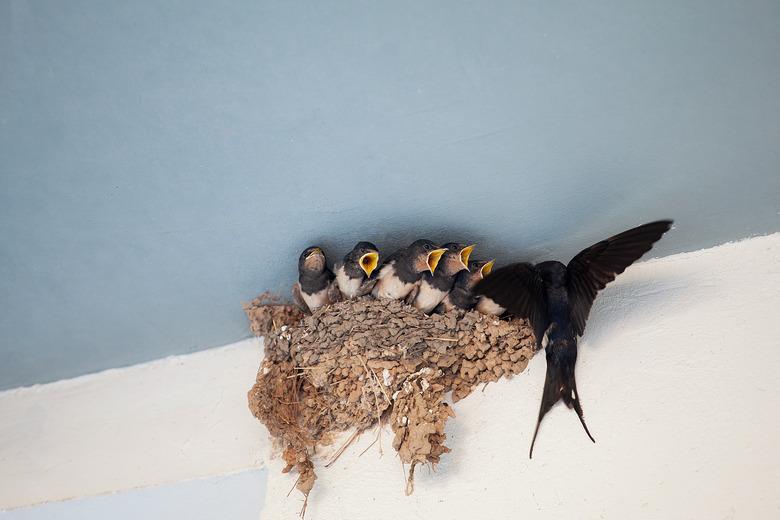How To Stop Birds From Building Mud Nests On My Porch
Several bird species build mud nests, including barn swallows, purple martins, and magpies. The birds won't harm you or your property, but they can become quite a nuisance if they take up residence on your porch. Although it can be fascinating to watch them construct their nests, the process is a messy one that will leave mud on your walls and porch. Because birds don't exactly have sophisticated toileting arrangements, you may find more than just mud on the porch.
Depending on where the nest is located, you may also find yourself getting dive-bombed frequently by angry birds. Like most animals, birds will protect their young and try to chase you away if you get too close to the nest. This is a problem if the birds nested right next to your front door or in an area you use often. The best way to solve the problem is to discourage nest building in certain places.
Be Aware of Legal Issues
If it's a little late for prevention, you will want to remove any mud nests currently present. This is especially helpful for barn swallows and other species that return to the same nest each year if they can. The timing matters when removing these nests, as there are times when it's illegal to disturb these protected species.
Several mud-nesting bird species have legal protection under the Migratory Bird Treaty Act. It is illegal to remove a nest that contains eggs or chicks. You need to remove the nests either before eggs happen or after the baby birds leave the nest. In most parts of the United States, this means removing the nests in the winter after the birds migrate to the South.
Avoid the Hype
The internet is full of tips and tricks that claim to deter birds, but much of this advice is utter fiction. One frequent piece of faulty advice is to install owl decoys around your property. It's true that owls frighten many birds, but none are afraid of owl statues. For this tactic to have any hope of working, you'll need to invest in a decoy that moves and makes authentic owl noises.
Flashing lights are equally fruitless. The theory says if the lights flash randomly rather than in a learnable pattern, it will scare the birds away by mimicking sudden movement. It's obvious that this trick is unlikely to work, however, given how close to humans these birds are willing to live.
Finally, avoid chemical repellents. There is no evidence that these repellents work. In fact, they can make things worse. Some websites recommend applying sticky sprays to annoy the birds, but the adhesive effect ultimately makes it easier for them to secure their nests.
Strategies That Work
If you catch them early in the mating season, you can discourage barn swallows and other birds by destroying their nests. Again, remember that it's illegal to remove nests containing eggs, but you can remove them before eggs are laid. Many of these birds prove to be quite tenacious, however, and will try to rebuild several times. You'll have to stay vigilant and destroy several nests before the birds move on.
You can also smooth things over to deter nest building under eaves and porch roofs. It's far easier to attach a mud nest to a rough texture than a smooth one. As such, deterring the birds is often as simple as hanging a piece of tin foil or plastic tarp on the wall beneath your eaves. Plexiglass panels also work.
If you want to repel the birds with something a little less garish than tin foil, hang bird netting. The netting should stretch from the outside edge of the eave to the side of the building. Hanging a few strands of fishing line 6 to 12 inches apart also helps and is barely visible, so it won't ruin your home's aesthetics.
Roosting spikes mounted on the wall also deter nest building, as will a hawk kite. Although owl decoys rarely work, kites shaped like owls and other predatory birds can work. The kite mimics the colors of owls or other birds of prey. It also moves constantly in the wind and creates a convincing silhouette of a predator in flight. Nature programs smaller birds to pay attention to these silhouettes against the sky, as they often indicate that death from above is imminent.
